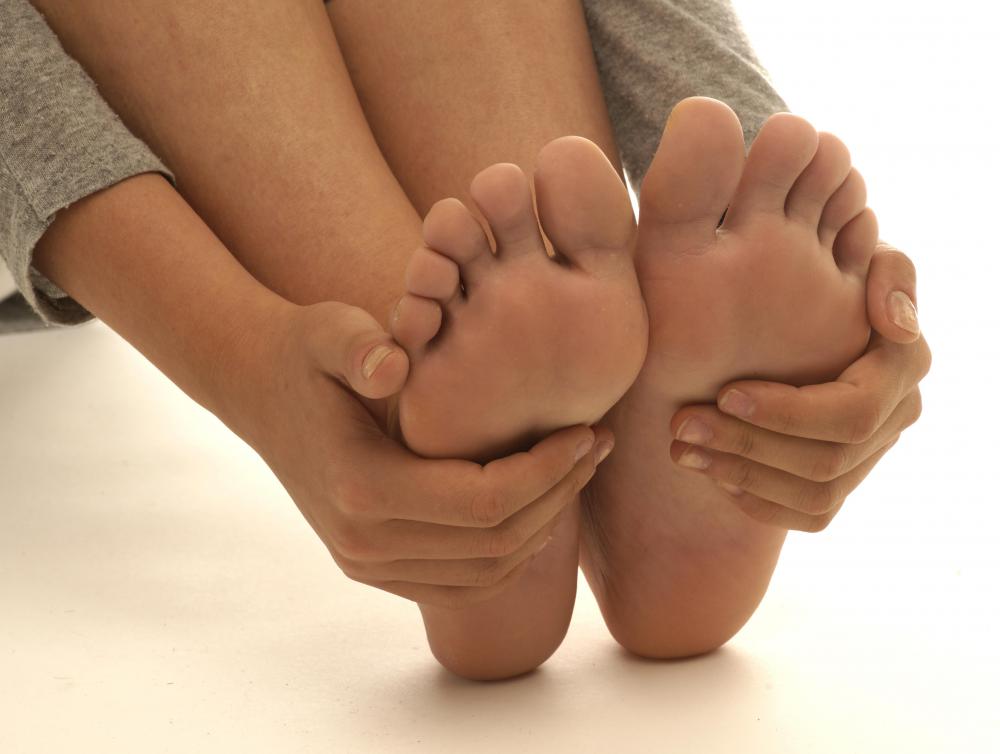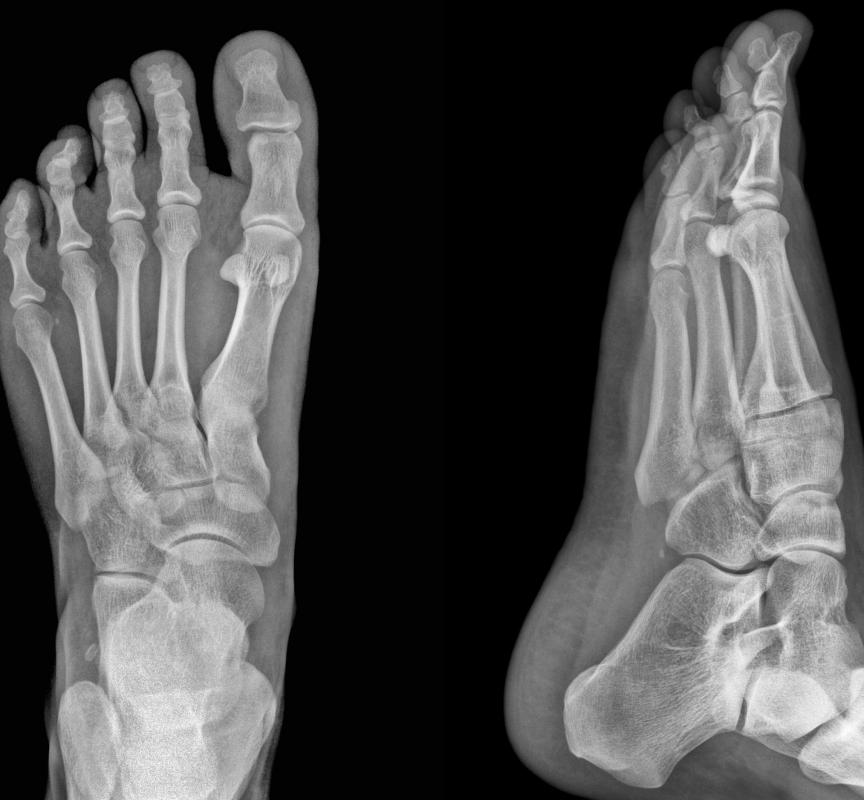At WiseGEEK, we're committed to delivering accurate, trustworthy information. Our expert-authored content is rigorously fact-checked and sourced from credible authorities. Discover how we uphold the highest standards in providing you with reliable knowledge.
What are the Most Common Symptoms of a Bone Spur in the Foot?
The symptoms of a bone spur in the foot will vary according to the location as well as the underlying cause of the bone spur. One that is located near the big toe, for example, will cause sharp, often intense pain near the toe or ball of the foot. Most people seek medical attention because of this pain, and the treatments may vary from taking medications to undergoing surgery. A heel spur may lead to plantar fasciitis, or inflammation of soft tissue throughout the foot. This pain is very often felt in the heel of the foot, through it may be felt in other areas such as the arch of the foot.
When a person with a bone spur in the foot stands for long periods of time, walks or runs, or even simply puts weight on the foot, the symptoms will often get worse. The bone spur can put pressure on soft tissue, nerves, or other parts of the foot that leads to worsening pain, altered walking or running gait, and avoidance of daily routines. If the pain becomes severe, the sufferer should see a medical professional as soon as possible; he or she may prescribe painkillers or anti-inflammatory medications to help relieve the pain, and if the bone spur causes chronic pain, surgery may be necessary to address the problem.

Certain types of arthritis may lead to bone spurs in any of the joints throughout the body; arthritis is a condition in which cartilage begins to break down and wear out, often allowing bone to rub against bone in the joint. This rubbing can degrade the bones, leading to bone spurs. The bones may try to repair themselves as well, creating abnormal growths that can interfere with the function of the joint. The joint may begin to move in ways it would not normally move, and a patient may feel intense pain when flexing the joint. Nerve pain may also accompany the bone spur, leading to sharp pain in other parts of the foot, ankle, or leg.

If repetitive motions, such as walking or simply standing for medium to long periods of time, begin to cause pain in all or part of the foot, a bone spur may be a cause. Only a medical professional can make an official diagnosis, and he or she can recommend a course of treatment to alleviate the pain and perhaps get rid of the spur itself.
AS FEATURED ON:
AS FEATURED ON:















Discussion Comments
@donasmrs-- Bone spurs cause pain because when the bone grows, the tendons get stretched. So there will be some pain even when sitting. Bone spurs also cause arthritis, stiffness and muscle weakness.
@feruze-- Usually, the heel does become swollen from the bone spur, at least that's what happened to me. When pressure is applied on the foot, the bone spur causes inflammation and puts pressure on the nerves and muscles in the area. So usually, there will be some swelling and pain in the foot when you're standing and walking. You need to see a doctor.
I've been managing my heel bone spur with special orthopedic shoes because the bone spur is not too large right now. But if it gets larger, I will have to have it removed.
I've been experiencing a lot of heel pain lately. I have little to no pain when I'm off my feet and soon as I start walking around, my heel starts to hurt. By the end of the day, the pain is unbearable.
I'm suspecting a bone spur but, what other symptoms does a heel bone spur cause? Should the ball of my foot be larger? Can the bone spur be felt?
Post your comments